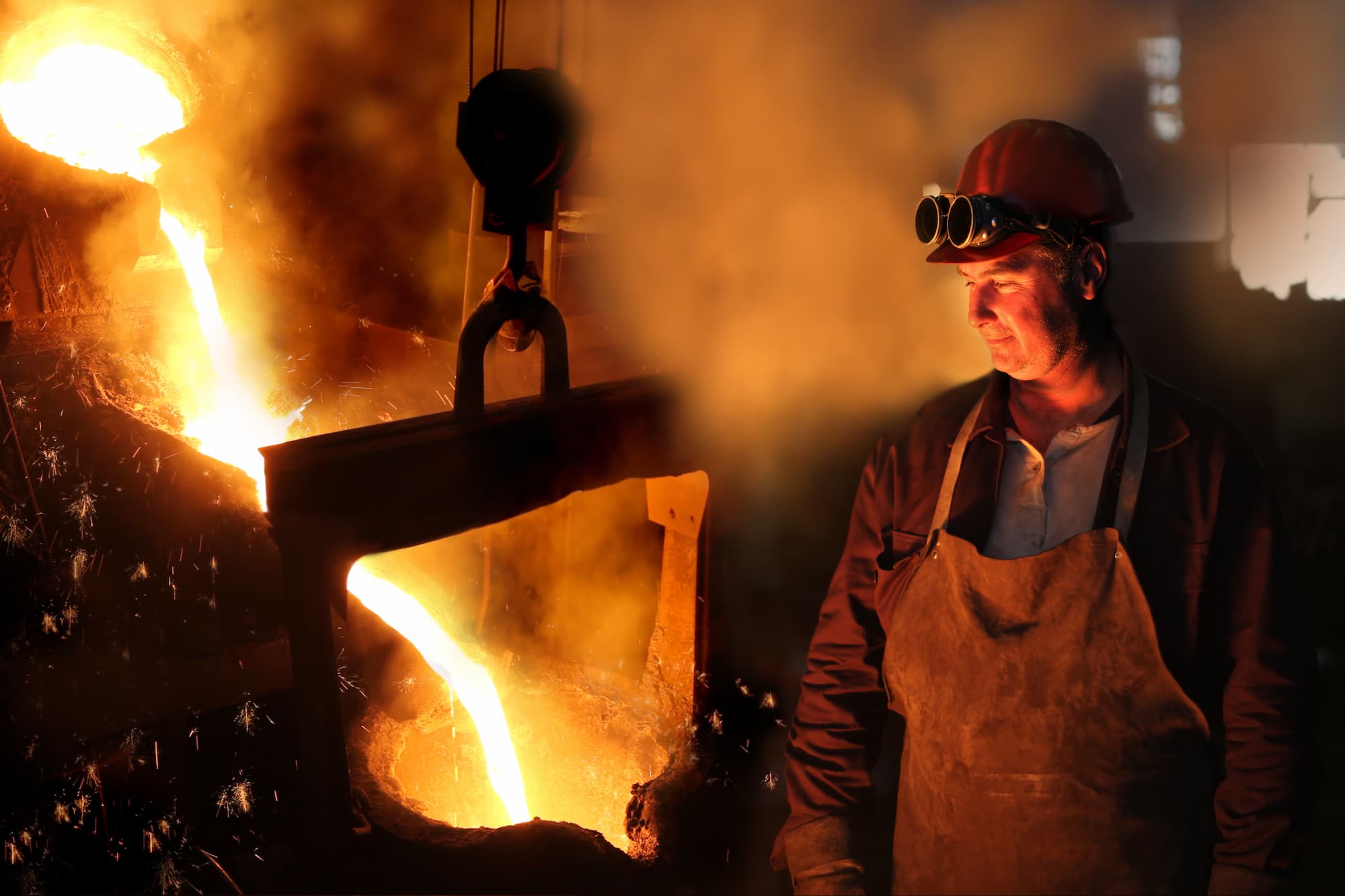Metallurgical defects can crop up during the metal casting process, leading to reduced part quality or even unusable parts. Ultimately, metal warping is caused by different portions of molten metal in a part that is cooling to varying rates than other parts. Understanding what causes metal warping improves mold design and produces cast parts of better quality.
What is Metal Warping?
Warpage is typically defined as a distortion in a cast part where the surfaces of the cast part do not follow the intended shape of the design. When a piece is removed from its mold, the dimensions do not align with what was intended. Parts that have warped can become dimensionally inaccurate and practically useless.
What Causes Metal Warping?
When a mold is filled with molten metal, the liquid metal begins to cool and solidify. As solidification occurs, the metal changes phases and freezes while contracting volumetrically. The contraction brought on by the phase transitions presents a window for the introduction of metallurgical flaws.
During Solidification
Metal warping remains an intriguing phenomenon as a metallurgical defect that can happen either during or after solidification. As solidification occurs, the volume of metal in the mold decreases. Keeping fluid metal channels open throughout the mold is critical to providing enough metal to compensate for this decrease in volume. Large areas of the part may warp without liquid metal to fill spaces.
After Solidification
The most prevalent cause of metal warping is temperature differences throughout the mold. The thickness of the components in a specific part, the time taken to pour the casting, the design of the gating system, and many other factors all play a role in the liquid metal temperature throughout a casting.
As the metal in the mold cools and solidifies at different rates, residual stresses build up in a part. These residual stresses continue to build until the casting is released from the mold. If the cast part does not have any features to resist the residual stresses in the part, metal warping occurs as the residual stresses are released.
How to Prevent Metal Warping?
With proper mold design, modeling, and thoughtful design of the cast part, warpage can often be significantly minimized or eliminated.
Don’t Force the Part
Foundrymen have previously prevented warpage by using small cast-on bars attached to various casting parts. These tie bars effectively prevent warpage from occurring but do not fix the actual issue. Residual stresses will remain in a part and can affect the cast part's quality, strength, and long-term viability.
Design Considerations
Warpage is more likely to occur on areas of the cast part that are large and flat. These sections can be hard to achieve without some degree of warpage. Adding ribs and serrations to the mold can reduce metal warping and keep the cast part true to shape. These design features stiffen the part and allow the cast part to resist the residual stresses in the part that otherwise would lead to warping.
Gating System Design
Getting the molten metal in fast enough is critical to minimizing warpage. The longer it takes to fill the mold, the greater the temperature variations throughout the mold and thus the greater likelihood of warpage. Ensure that the gating system is designed sufficiently for the rapid pouring of molten metal.
Draft Allowance
Another common cause of warpage in cast metal parts is inappropriate or inadequate draft allowance in the mold cavity. Sufficient draft allowances are needed to ensure liquid metal fills properly and that the cast part can be easily removed from the mold.
Uniform Section Sizes
One of the key reasons why residual stresses stack up and cause metal warping in a cast part is the variation in temperature and solidification rates. Keeping section sizes uniform throughout the part is a great design practice that also reduces warpage. This technique prevents thin areas of the cast part from solidifying very quickly while leaving thicker sections to cool much more slowly.
Increase the Pressure
Ensure the injection pressure is high enough to pack the molecules together correctly. Without enough pressure, liquid metal will not fill the spaces left as the metal begins to solidify and shrink. Openings in the finished part can result in warpage of the casting.
Design Warpage Out
While metal warping can ruin a finished part, with careful attention to best practices, warpage can typically be reduced or eliminated. Knowing the causes of warpage is the first step to designing against it. Prevent metal warping in finished cast parts by designing it from the beginning and adhering to best practices during the casting.
Contact Transvalor Americas to learn more.


